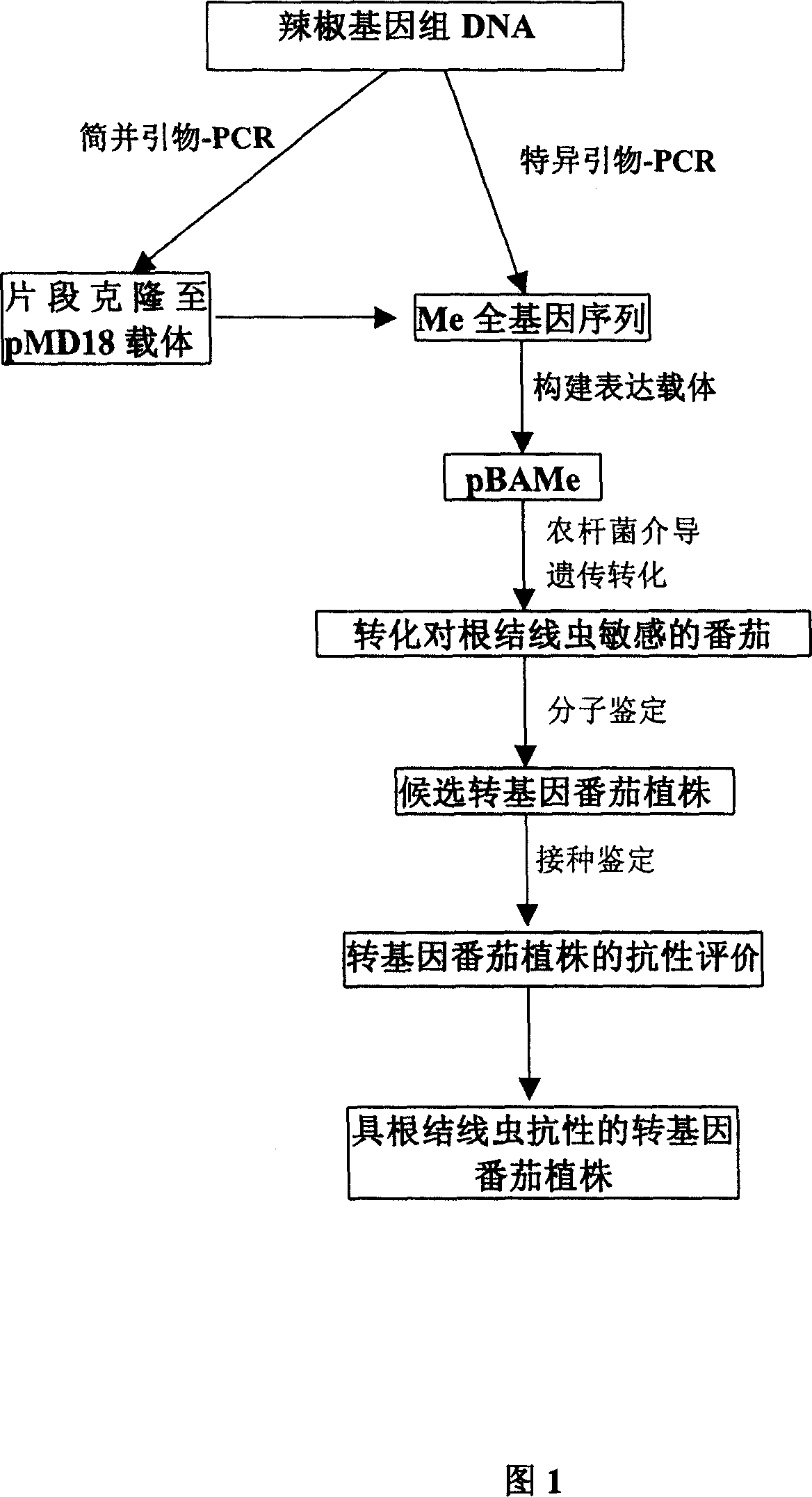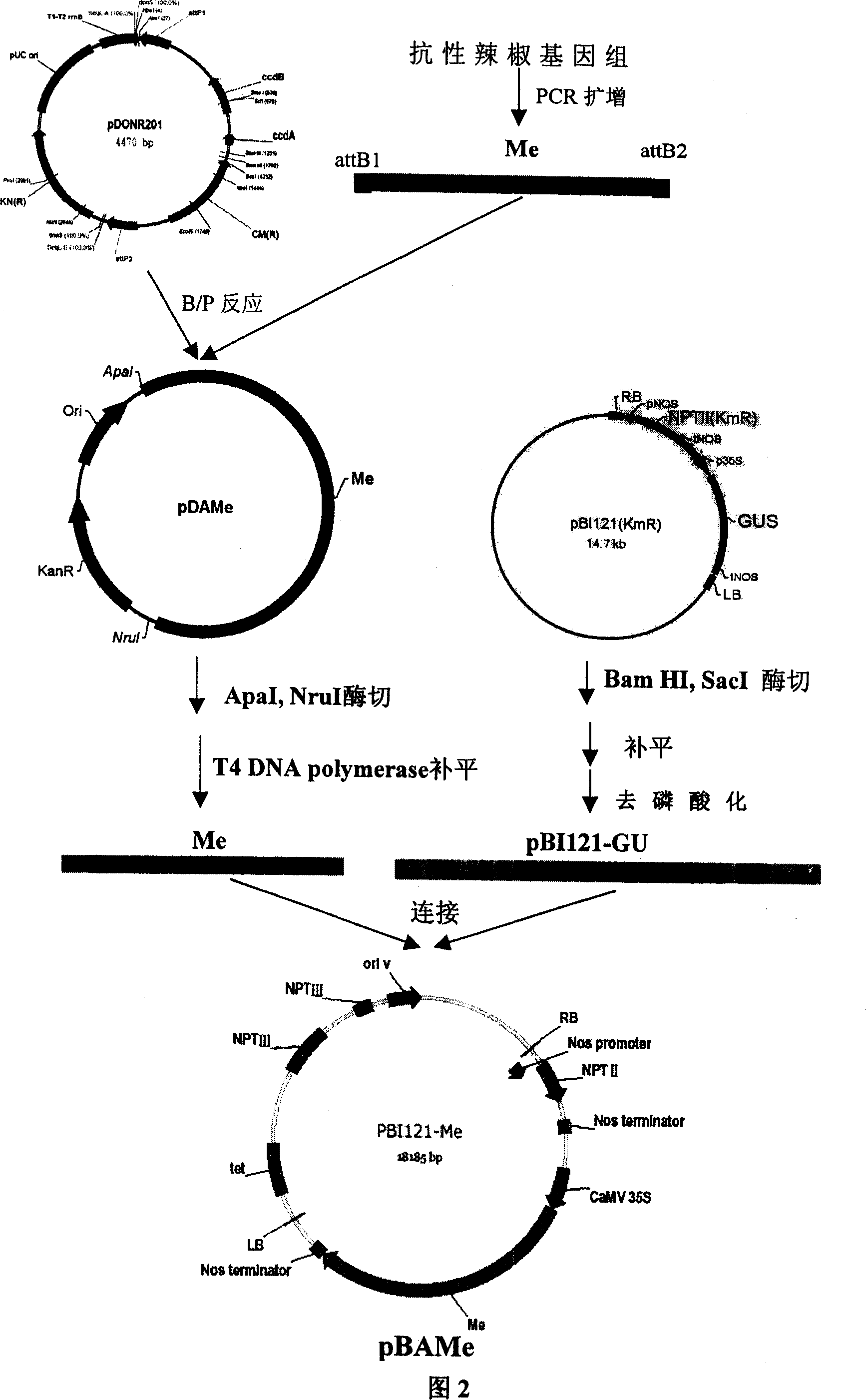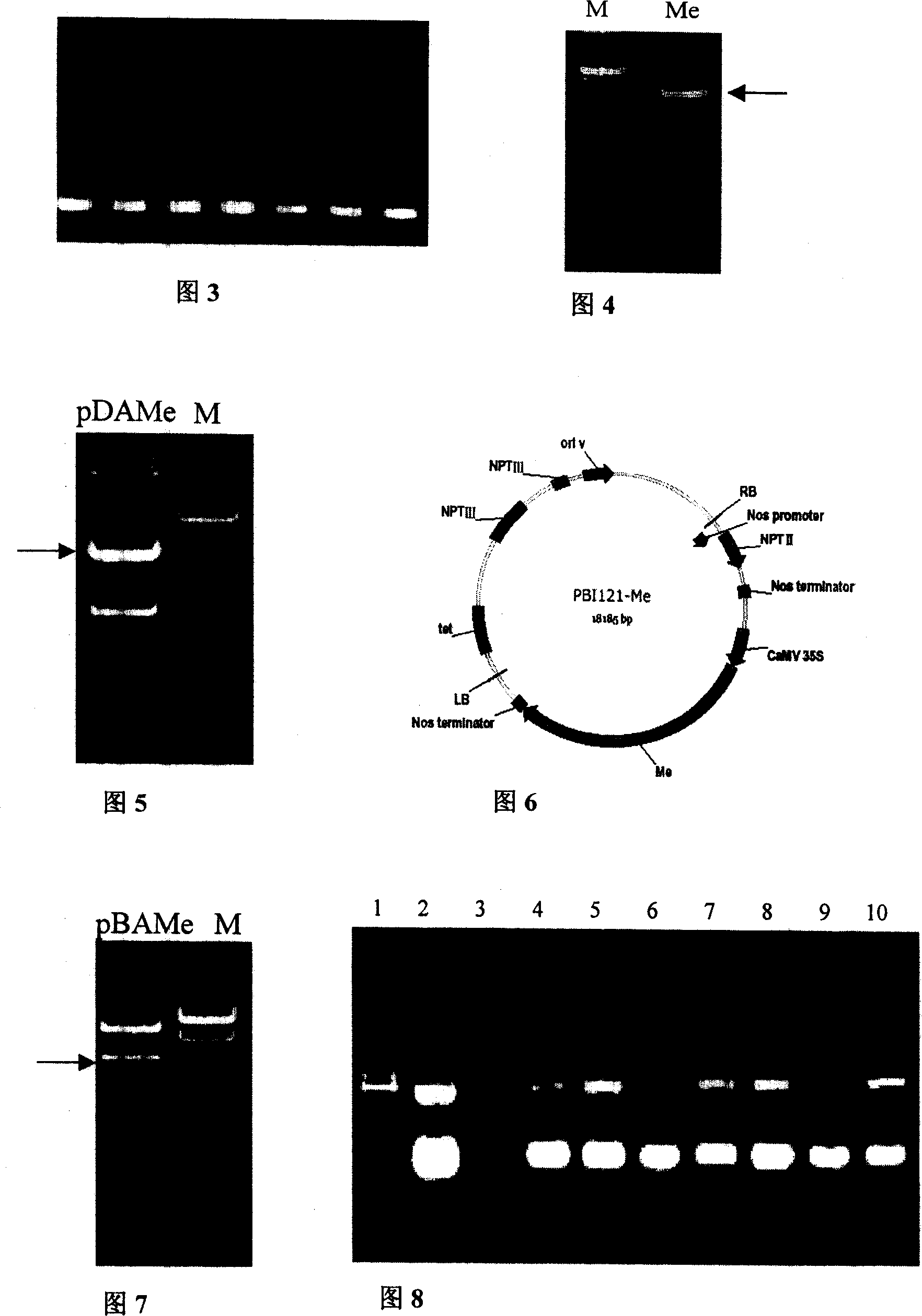Cloning of gene against meloidogyne of capsicum and application thereof
A technology of anti-root-knot nematode and pepper genome, applied in the fields of application, genetic engineering, plant gene improvement, etc., can solve the problems that did not mention tomato, the application method and application effect of the gene, and solve the problem of lack of germplasm resources, The effect of saving production cost and shortening the breeding period
- Summary
- Abstract
- Description
- Claims
- Application Information
AI Technical Summary
Problems solved by technology
Method used
Image
Examples
Embodiment 1
[0046] Embodiment 1: the isolated clone of Me gene of the present invention
[0047] The cloned gene of the present invention comes from the capsicum genome, according to the four anti-nematode genes that have been cloned in the plant (referring to the above-mentioned reference Hsl pro-1 ①, Mi②, Gpa2③, Hero④) nucleotide binding site (Nucleotide binding site, NBS) and leucine-rich repeat region (Leucine-rich repeat region, LRR) conservative sequence design a pair of degenerate primers (as described below ), using the resistant pepper genomic DNA as a template, PCR amplification, the reaction system is 25μL, containing 1×PCR buffer, 1.5mmol / LMgCl 2 , 0.2mmol / L dNTPs, 0.2mmol / L forward and reverse primers, 1U Taq DNA polymerase, 100ng template. Reaction cycle parameters: 94°C pre-denaturation for 5min, 94°C for 30s, 50°C for 1min, 72°C for 90s, 5 cycles, 94°C for 30s, 55°C for 1min, 72°C for 90s, 25 cycles, 72°C for 10min, 4°C storage . The PCR product was recovered, connected...
Embodiment 2
[0059] Embodiment 2, plant transformation vector construction
[0060] The plasmid pDAMe was digested with ApaI and NruI, and then filled with T4 DNA Polymerase to recover the large fragment; at the same time, the plasmid pBI121 was digested with BamHI and SacI to remove the GUS gene fragment, filled with T4 DNA Polymerase, and then acidic phospholipid Dephosphorylate the enzyme CIAP, recover large fragments after gel electrophoresis, ligate with the previously recovered product under the action of T4 DNA ligase, transform the ligated product into E. coli strain DH5α, and place it on an LB solid plate containing 50 mg / L kanamycin Positive clones were screened, plasmids were extracted for enzyme digestion and PCR identification, and a recombinant clone containing the inserted target fragment was obtained, which was named pBAMe. Application of electric shock method (see J. Sambrook et al., "Molecular Cloning Experiment Guide", third edition, translated by Jin Dongyan et al., Sci...
Embodiment 3
[0061] Embodiment 3, plant genetic transformation
[0062] The plasmid pBAMe was introduced into Agrobacterium LBA4404 by electric shock method, and the tomato variety "Zhongshu No. 5" (purchased from a commercial variety) with stable traits and sensitivity to root-knot nematode was transformed. Molecular identification, insect resistance screening and self-purification , to obtain homozygous transgenic plants or strains.
[0063] The genetic transformation steps of tomato mediated by Agrobacterium tumefaciens are as follows:
[0064] 1. Sterile vaccine and tobacco cell culture
[0065] Aseptic seedling cultivation: Disinfect the seeds of the tomato variety "Zhongshu No. 5" with 70% alcohol for 1 min, then sterilize in 20% sodium hypochlorite (containing 6% available chlorine) for 15 min, rinse with sterilized distilled water for 3 times, and inoculate the seeds in 1 / 2 MS basic medium (see Murashige T. and F. Skoog. Physiol. Plant, 1962, 15: 473-497), in the dark at 25±2°C u...
PUM
 Login to View More
Login to View More Abstract
Description
Claims
Application Information
 Login to View More
Login to View More - R&D
- Intellectual Property
- Life Sciences
- Materials
- Tech Scout
- Unparalleled Data Quality
- Higher Quality Content
- 60% Fewer Hallucinations
Browse by: Latest US Patents, China's latest patents, Technical Efficacy Thesaurus, Application Domain, Technology Topic, Popular Technical Reports.
© 2025 PatSnap. All rights reserved.Legal|Privacy policy|Modern Slavery Act Transparency Statement|Sitemap|About US| Contact US: help@patsnap.com



